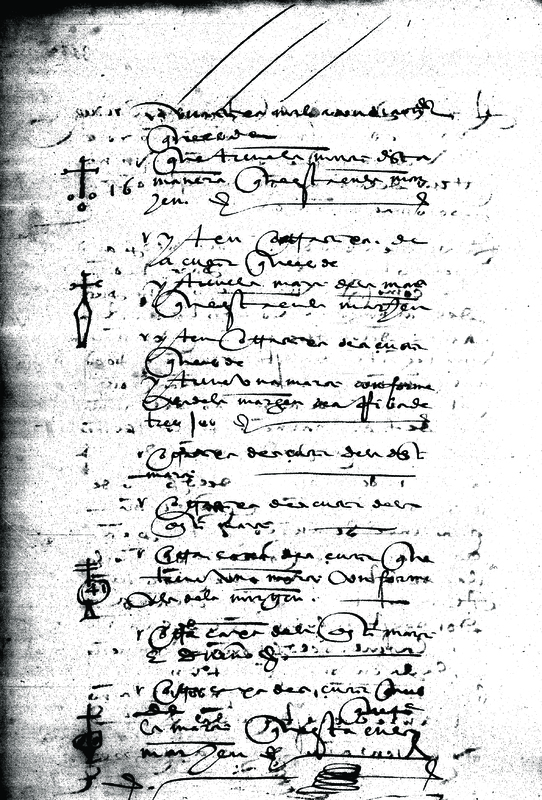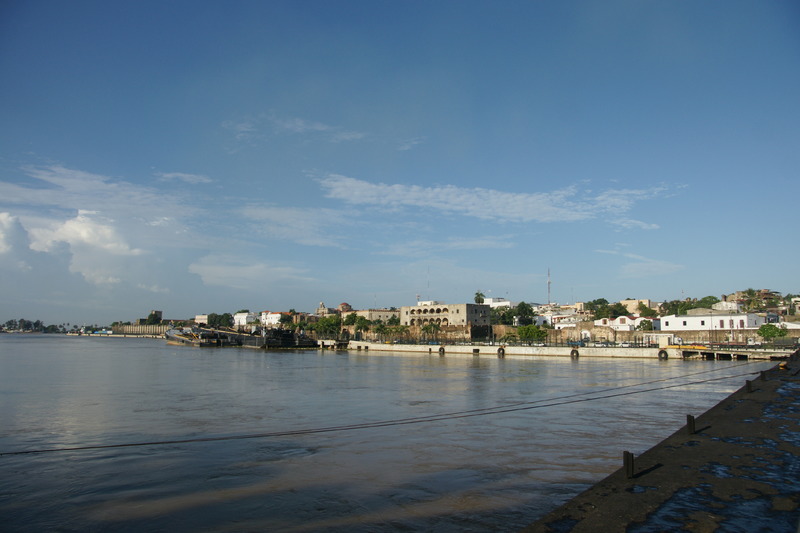Branded sugar crates and branded black Africans (1555)
TRANSCRIPTION
ENGLISH TRANSLATION
r / 16 / A box in bad condition which is of [blank] that has a mark in this manner as shown on the margin
r Item: another box of sugar which is of [blank] and has a mark in the manner shown on the margin
r item: another box of sugar which is of [blank] and has a mark according to the one on the upper margin with three eyes
r another box of sugar, of this mark
r another box of sugar of the said mark
r another box of sugar that has a mark according to that of the margin
r Another box of the same mark and owner
r another box of sugar which is of [blank] that had the mark that is on the margin
Commentary
Black Africans forced into the Trans-Atlantic Slave Trade were transported on ships that also carried European-manufactured commodities for the colonists. One of the main products from the colonial settlements in the Americas such as La Española was cane-sugar, produced by the enslaved Blacks who worked the plantations. They grew and harvested the canes and also endured grueling fast-paced toil in the furnace-rooms where the cane-juice was boiled into syrup.
Many of the enslaved Africans were branded on various parts of their bodies to be identified as property. Similarly, the big wooden crates of sugar, the product of the slaves’ labor which was sent from places like La Española to the consuming markets of Europe, were also branded.
The image in this panel corresponds to a folio of the cargo manifest of a Portuguese ship that arrived in La Española, reportedly on its way from Africa to Portugal, carrying crates of sugar and slaves. Each crate is identified by a symbol equivalent to an engraved commercial mark.


